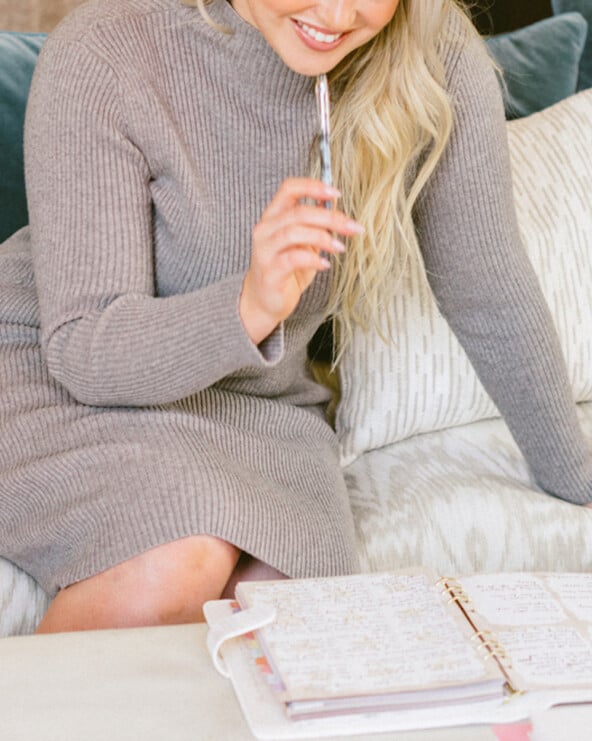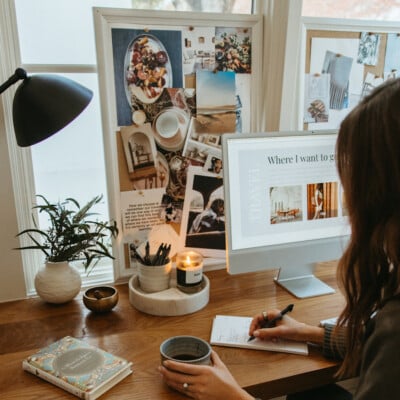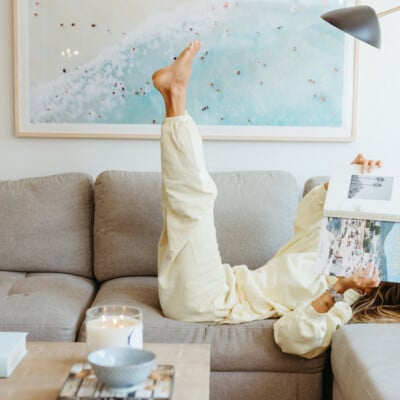Sure, wooden crates filled with record collections make for an amazing decorative detail, and all our favorite tastemakers all seem to have a turntable strategically perched in their respective stylish living rooms. But a lot of you may still be wondering: why vinyl? My good friend Paul (a fellow music lover, and symbolically, the person who gifted me with my first record player) put it perfectly: “Because vinyl is physical and not digital, the way it stores sound is literally exactly what was recorded, instead of a recreation. Think about looking at the Mona Lisa in person as opposed to looking at it on an HDTV. Sure, it looks great on the TV, but there are things you just can’t capture digitally, like the texture and 3D of a painting.” So when listening to an old record, you’ll pick up tones and a quality of timbre that you might not get from an mp3 file, resulting in an overall richer playback experience. Make sense?
So now that we’ve convinced you, you might be wondering where to begin. Today we’re demystifying the world of collecting and playing vinyls, beginning with arguably the most important part of all: setting up your system. Have some tricks of the trade to share? Leave a comment below!
*featured image source

Option #1: The Beginner.
You’ve seen this option pinned a hundred times for its rainbow of color options and affordability. With an all-in-one turntable, speakers are built-in so that you don’t need to purchase any other add-ons… but of course, you’re compromising sound quality for convenience. So, while this is a great entry piece into the world of record playing, be sure to purchase an all-in-one with RCA outputs so that you have the option to upgrade your setup down the road with the addition of external speakers.

What you’ll need:
An all-in-one turntable like the Ion Pro Sound USB Vinyl Record Player (pictured) or the Crosley Cruiser Briefcase Portable Vinyl Record Player
*Tip: Look for an all-in-one that comes with a USB port if you want the ability to convert your LP tracks to mp3s.

Option #2: The Two-Piece Setup.
The next option requires just one additional piece of equipment, but will make a huge difference when it comes to the sound quality of your music. Simply hook your turntable up to a set of external speakers with an RCA cable, and enjoy the exponentially sweeter sounds of your vinyls.

What you’ll need:
First, find a turntable within your budget (bearing in mind that in this realm, a higher price tag often indicates a better product). You’ll want one with a built-in pre-amp, like the Sony PSLX300USB USB Stereo Turntable or Audio-Technica’s AT-LP120 USB Vinyl Record Player (pictured)

What you’ll need:
Why invest in a great turntable or vinyls when you don’t have speakers that do them justice? Of course, you could spend an arm and a leg on a big, booming system, but for our purposes, we love Audioengine’s A2+ Premium Powered Desktop Speakers (pictured), or at a slightly higher price point, the Marshall Stanmore M-ACCS-00166 Speaker.

Option#3: The Ultimate Setup.
So you’ve got a great turntable and some solid speakers. Ready to splurge on a piece of gear that’ll take your setup to the next level? Time to invest in a receiver. A must-have tool on your journey to sonic perfection, a receiver allows you to adjust the output levels of your audio to get your music sounding just right, and in many cases, choose which source you’d like music to play from other than your turntable, like the radio or your smartphone.
*Tip: Depending on the type of music you like to listen to, you may also consider plugging a subwoofer into your receiver (think any genre where you really want to hear the bass line, like hip hop or classical).
*image source

What you’ll need:
In addition to the turntables we referenced on slide 4 and the speakers we suggested on slide 5, we recommend this receiver from Marantz for a great price, or a vintage one for exceptional quality.
Tip: Keep in mind how much output you’ll need to fill your space — for most home listening, 10 – 40 watts per channel is appropriate. For more tips on choosing a receiver, check out this helpful link.
*image source

Now for the fun stuff. Some amazing record player storage options…
- Simple Wood Console Table (pictured)
- School House Electric Library Cart
- 4040 Locust Wooden Media Console
- Apple Crates

And a few must-have accessories…




